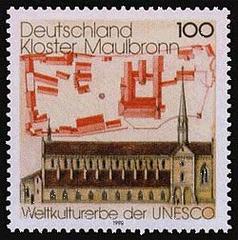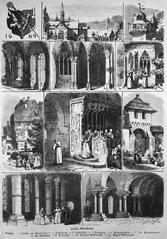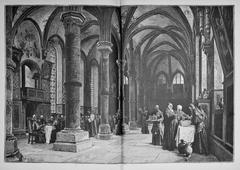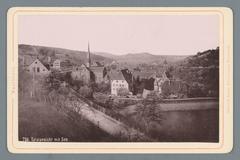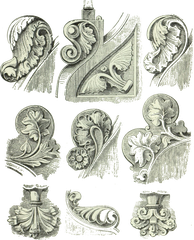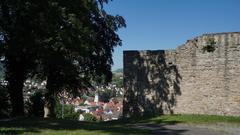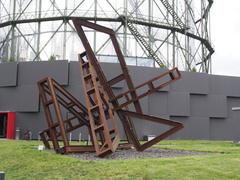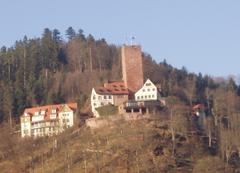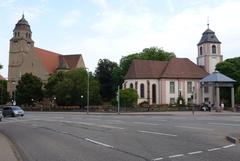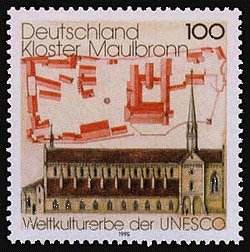
Kloster Maulbronn Visitor Information and Guide
Date: 18/07/2024
Introduction
Nestled in the serene countryside of Baden-Württemberg, Germany, Kloster Maulbronn stands as one of the best-preserved medieval monasteries in Europe. Founded in 1147 by a group of Cistercian monks, this UNESCO World Heritage Site offers a captivating blend of architectural styles and a rich tapestry of history. The monastery’s story is not just one of religious significance but also of economic prowess, cultural adaptation, and architectural evolution. This comprehensive guide aims to immerse you in the multifaceted world of Kloster Maulbronn, providing essential details on its history, visitor information, and travel tips to make your visit unforgettable. Whether you’re planning to explore its Romanesque simplicity, Gothic grandeur, or the surrounding picturesque villages and vineyards, Kloster Maulbronn promises a journey through time that is both educational and enchanting (Kloster Maulbronn - History, Visiting Hours, Tickets, and Travel Tips).
Table of Contents
- Introduction
- The Cistercian Order - Setting the Stage
- 1147 - A Monastery Rises in the Valley
- Architectural Evolution - From Romanesque Simplicity to Gothic Grandeur
- Economic Powerhouse - Beyond the Monastic Walls
- The Reformation and its Aftermath - A Monastery Adapts
- A Legacy Preserved - From Seminary to UNESCO World Heritage Site
- Visitor Information - Kloster Maulbronn Tickets, Visiting Hours, and Travel Tips
- Special Events and Guided Tours
- FAQ Section
- Conclusion - A Timeless Treasure Awaits
- Sources
The Cistercian Order - Setting the Stage
To truly appreciate the significance of Kloster Maulbronn, one must first understand the order that breathed life into its stones. Founded in 1098 in Cîteaux, France, the Cistercian Order emerged as a reformist movement within the Benedictine tradition. Seeking a return to the simplicity and austerity advocated by St. Benedict, the Cistercians emphasized manual labor, self-sufficiency, and a strict adherence to their monastic rule. Their influence spread rapidly across Europe, with Maulbronn becoming a shining example of their architectural prowess and monastic ideals.
1147 - A Monastery Rises in the Valley
The story of Kloster Maulbronn begins in 1147 when a group of Cistercian monks, led by Walter of Lomersheim, established a small monastic settlement in the secluded valley of Eckenweiher. The location, gifted by the Lords of Calw, provided the isolation and natural resources essential to the Cistercian way of life. The monks, skilled in agriculture and craftsmanship, transformed the wilderness into a thriving community.
Architectural Evolution - From Romanesque Simplicity to Gothic Grandeur
The architecture of Kloster Maulbronn reflects the evolution of architectural styles over centuries. The earliest structures, including the lay brothers’ quarters and parts of the cloister, were built in the simple and functional Romanesque style, characterized by rounded arches and thick walls. As the monastery prospered, so did its architectural ambitions. The construction of the main church, initiated in the late 12th century, marked a transition to the soaring heights and intricate details of Gothic architecture. The church, with its ribbed vaults and pointed arches, stands as a masterpiece of Cistercian Gothic, its austere beauty a testament to the order’s spiritual aspirations.
Economic Powerhouse - Beyond the Monastic Walls
Kloster Maulbronn’s influence extended far beyond its spiritual significance. The Cistercians, known for their agricultural expertise, developed vast vineyards and farmland, transforming the surrounding region into a fertile agricultural hub. Their innovative water management system, a marvel of medieval engineering, ensured a steady supply of water for irrigation and powered the monastery’s mills. This economic prosperity attracted settlers and fueled the growth of surrounding villages, solidifying Maulbronn’s position as a regional center of power and influence.
The Reformation and its Aftermath - A Monastery Adapts
The 16th century ushered in a period of upheaval with the Protestant Reformation. In 1556, under the rule of Duke Christoph of Württemberg, Kloster Maulbronn was dissolved, its monastic life coming to an abrupt end. However, unlike many other monasteries that faced destruction or abandonment, Maulbronn was granted a unique fate. Duke Christoph, recognizing the architectural and educational value of the complex, transformed it into a Protestant seminary. This decision ensured the preservation of Maulbronn’s legacy, albeit in a transformed capacity.
A Legacy Preserved - From Seminary to UNESCO World Heritage Site
For centuries, Kloster Maulbronn served as a renowned Protestant seminary, shaping the minds of generations of theologians and scholars. Its educational legacy continues to this day, with the Evangelische Seminare Maulbronn, a prestigious boarding school, housed within its historic walls. In recognition of its exceptional historical, architectural, and cultural significance, Kloster Maulbronn was designated a UNESCO World Heritage Site in 1993. This prestigious designation underscores its status as a universally important landmark, deserving of preservation for generations to come.
Visitor Information - Kloster Maulbronn Tickets, Visiting Hours, and Travel Tips
When planning your visit to Kloster Maulbronn, here are some essential details:
Visiting Hours:
- April to October: 9:00 AM - 5:30 PM
- November to March: 10:00 AM - 5:00 PM
Ticket Prices:
- Adults: €8
- Children (6-15 years): €4
- Family ticket: €20
Travel Tips:
- Kloster Maulbronn is accessible by car and public transportation. There are parking facilities available for visitors.
- Guided tours are available and highly recommended for a deeper understanding of the site’s history and architecture.
- Don’t miss the chance to explore the nearby vineyards and quaint villages, which offer a charming glimpse into the region’s culture.
- Photographic spots include the main church, the cloister, and the scenic surroundings.
Special Events and Guided Tours
Kloster Maulbronn hosts various special events throughout the year, including medieval fairs, concerts, and seasonal festivals. Check the official website for the latest updates and event schedules. Guided tours are available in multiple languages and offer an in-depth look at the monastery’s history, architecture, and daily life of the monks.
FAQ Section
What are the visiting hours for Kloster Maulbronn?
- April to October: 9:00 AM - 5:30 PM
- November to March: 10:00 AM - 5:00 PM
How much are tickets to Kloster Maulbronn?
- Adults: €8
- Children (6-15 years): €4
- Family ticket: €20
Are guided tours available?
- Yes, guided tours are available in multiple languages. They provide a comprehensive overview of the site’s history and architecture.
What are some nearby attractions?
- Nearby attractions include the vineyards, scenic villages, and other historical sites in the region.
Conclusion - A Timeless Treasure Awaits
Kloster Maulbronn stands as a captivating testament to the enduring power of history. Its well-preserved architecture, intricate water management system, and the echoes of monastic life that linger within its walls offer a unique and immersive journey through time. Whether you are drawn to its architectural grandeur, its spiritual significance, or simply the allure of stepping back in time, Kloster Maulbronn promises an unforgettable experience. Plan your visit today and explore one of Germany’s most remarkable historical sites.
References
- Kloster Maulbronn - History, Visiting Hours, Tickets, and Travel Tips, 2023, Kloster Maulbronn
- Exploring Kloster Maulbronn - Visiting Hours, Tickets, and Key Attractions of this UNESCO Site, 2023, Kloster Maulbronn
